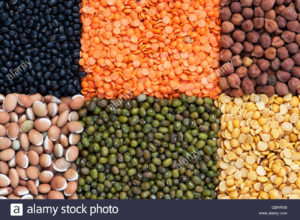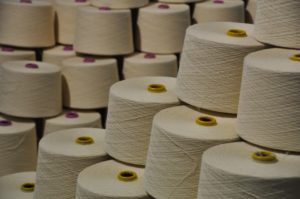
Pulses are the dried edible seeds of certain plants in the legume family. The United Nations Food and Agriculture Organization (FAO) recognizes 11 types of pulses grown worldwide. The four main types of pulses grown in Canada are dry peas, lentils, beans and chickpeas.Pulses are very high in protein and fibre, and are low in fat. Pulses are also nitrogen-fixing crops that improve the environmental sustainability of annual cropping systems. Pulses come in a variety of shapes, sizes and colours and can be consumed in many forms including whole or split, ground in to flours or separated into fractions such as protein, fibre and starch.
Other foods in the legume family like fresh beans and peas are not considered pulses – the term “pulse” only refers to the dried seed. Soybeans and peanuts are also not considered pulses because they have a much higher fat content, whereas pulses contain virtually no fat.

